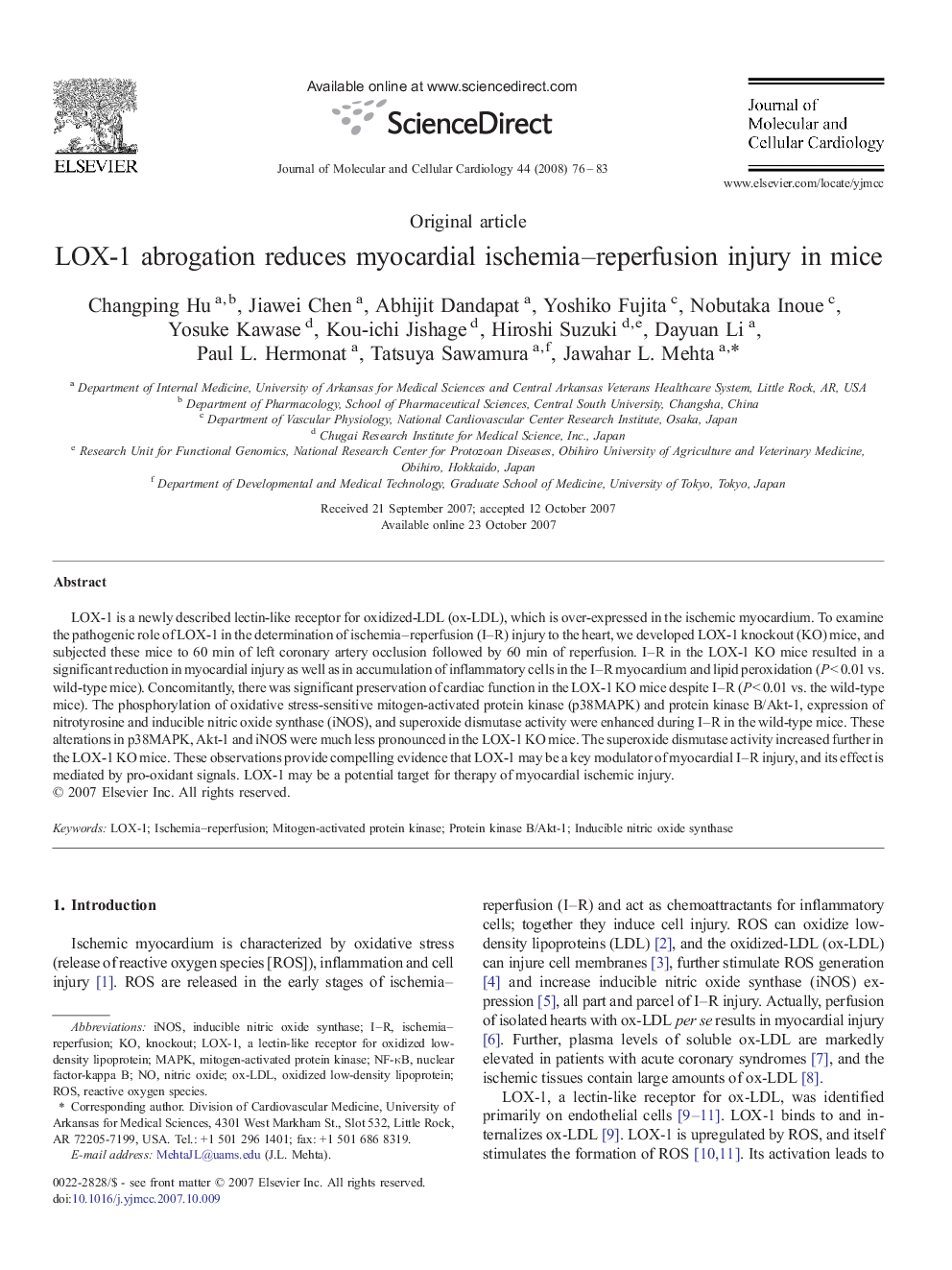| Article ID | Journal | Published Year | Pages | File Type |
|---|---|---|---|---|
| 2191566 | Journal of Molecular and Cellular Cardiology | 2008 | 8 Pages |
LOX-1 is a newly described lectin-like receptor for oxidized-LDL (ox-LDL), which is over-expressed in the ischemic myocardium. To examine the pathogenic role of LOX-1 in the determination of ischemia–reperfusion (I–R) injury to the heart, we developed LOX-1 knockout (KO) mice, and subjected these mice to 60 min of left coronary artery occlusion followed by 60 min of reperfusion. I–R in the LOX-1 KO mice resulted in a significant reduction in myocardial injury as well as in accumulation of inflammatory cells in the I–R myocardium and lipid peroxidation (P < 0.01 vs. wild-type mice). Concomitantly, there was significant preservation of cardiac function in the LOX-1 KO mice despite I–R (P < 0.01 vs. the wild-type mice). The phosphorylation of oxidative stress-sensitive mitogen-activated protein kinase (p38MAPK) and protein kinase B/Akt-1, expression of nitrotyrosine and inducible nitric oxide synthase (iNOS), and superoxide dismutase activity were enhanced during I–R in the wild-type mice. These alterations in p38MAPK, Akt-1 and iNOS were much less pronounced in the LOX-1 KO mice. The superoxide dismutase activity increased further in the LOX-1 KO mice. These observations provide compelling evidence that LOX-1 may be a key modulator of myocardial I–R injury, and its effect is mediated by pro-oxidant signals. LOX-1 may be a potential target for therapy of myocardial ischemic injury.
